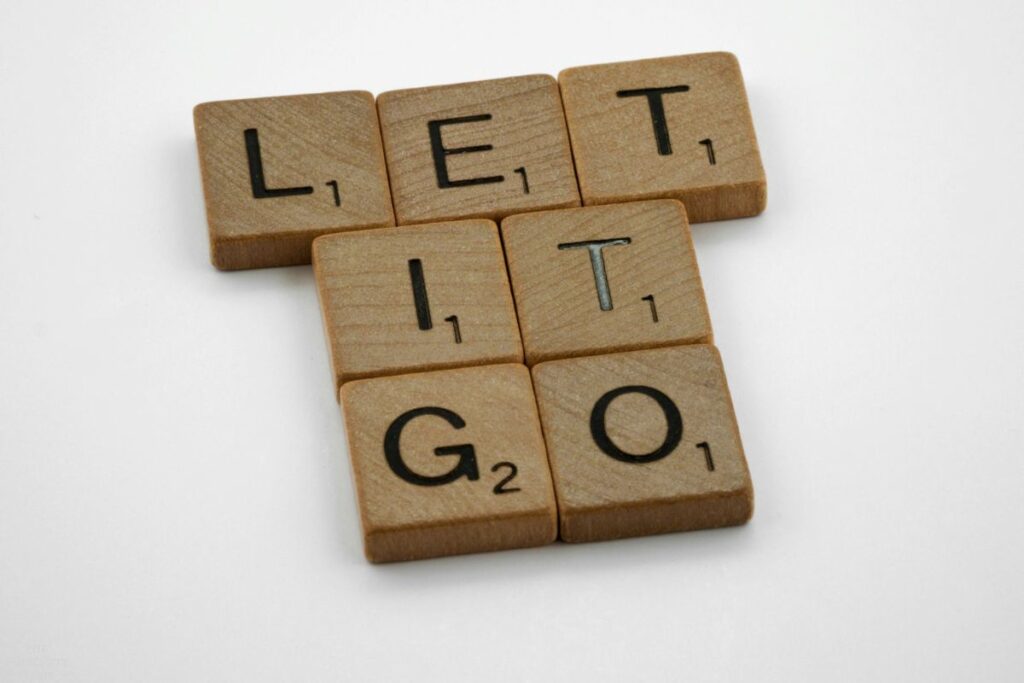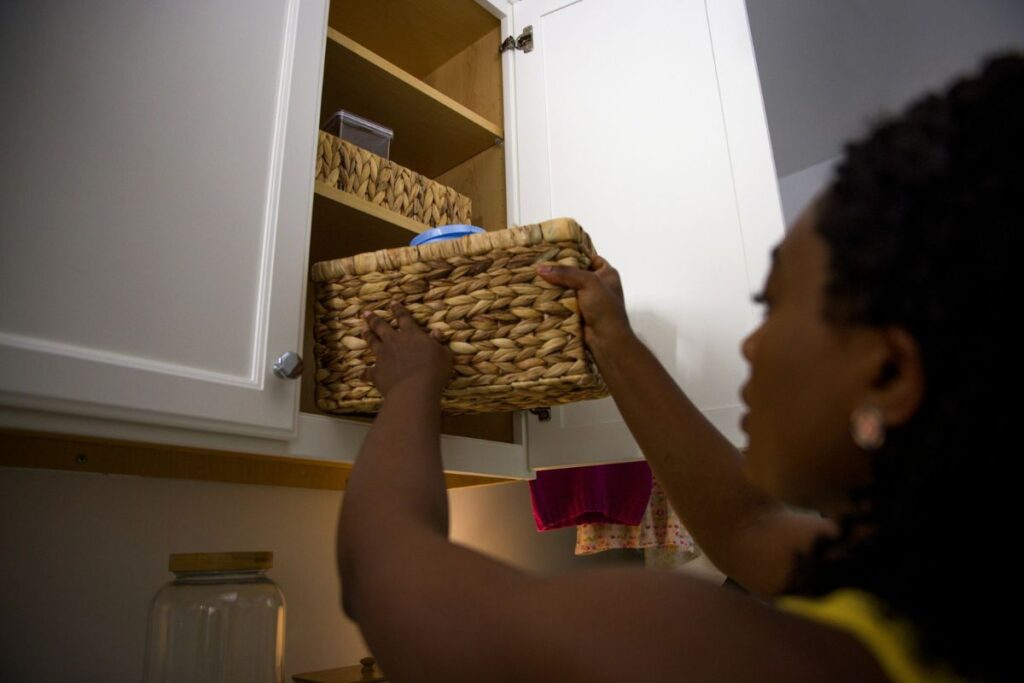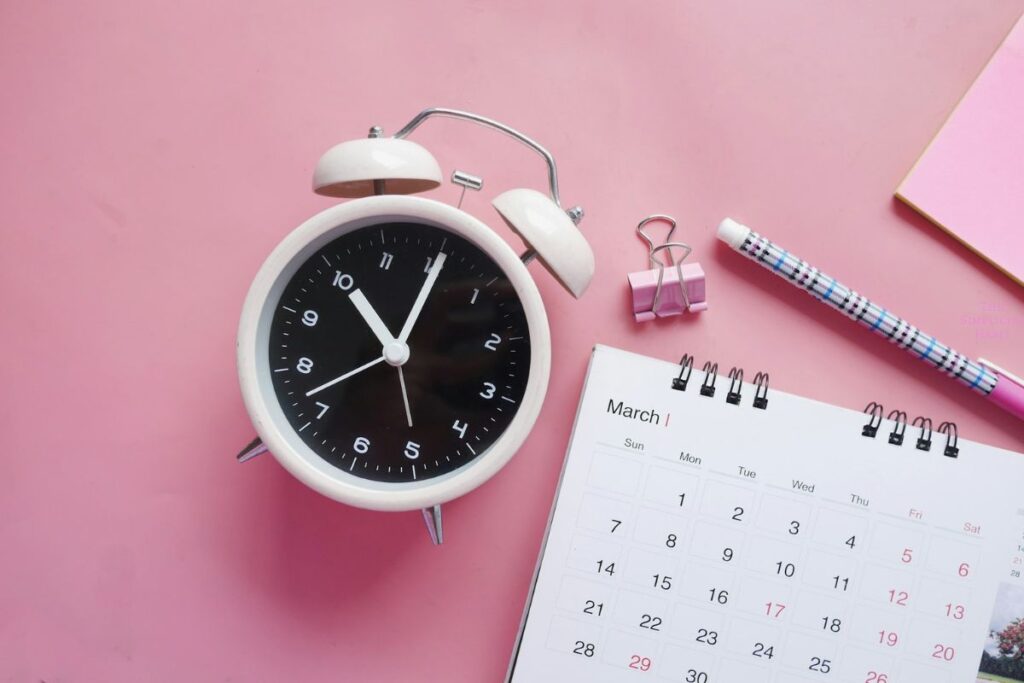Inside: How to use the ‘future self audit’ to declutter your things based on who you want to become.
A guest post by Rose Morrison
Have you ever looked around and felt completely overwhelmed by all of the things you own?
They may no longer reflect who you are or want to be. Accumulating an excess of stuff can leave you feeling weighed down and disconnected.
The “future self audit” is about decluttering for intentional living, not necessarily decluttering for minimalism.
It’s a practical approach to tidying up and designing a space that aligns with your dreams.
Discover how to use the “future self audit” to cultivate an environment for your ambitions, awaken your life’s inner purpose, and renew your sense of calm.

Understanding the “Future Self Audit”
Tidying your home has several benefits, including improved physical safety, better air quality, deeper sleep and a more comfortable living space.
Many also find that decluttering for mental health promotes mindfulness, enhances mood and reduces anxiety.
This is because visual distraction can overburden your cognitive abilities and hinder your working memory, making concentrating harder and increasing irritability.
The “future self audit” is a different approach to traditional cleaning. It helps you cultivate a stronger sense of personal control, enabling you to take charge of your life and destiny.
You’re not just removing items that no longer serve you — you’re making a deliberate choice and crafting something that feels authentic.

Defining Your Future Self
Defining your future self requires self-reflection to determine who you want to become.
The following steps will empower and guide you to act with intentionality toward your vision.
Visualize the “Ideal Day”
In a quiet space, close your eyes and imagine yourself waking up in the future.
Where are you, and who are you with? What are your plans for the day, and how do you feel?
This exercise is excellent for engaging your senses and noticing sights, smells and emotions.
Keep a journal for this practice and jot down your visualization. Having something to reflect on will help you see what needs changing and make decisions that bring you closer to living your ideal day.

Identify Core Values
Your core values govern your actions and determine what matters most to you. Think about when you felt most proud or fulfilled.
What values do you believe were present in those moments? Some examples may include connection, good health, awareness and creativity.
Reflect on how you can integrate your priorities and values into your daily life and interactions with others.
If positive mental and physical health are especially important to you, consider starting to cook nutritious meals at home or taking healing walks in nature.
If connection is essential, consider volunteering in your community or making more time for friends.

Create a “Future Self” Vision Board
Spark creativity for your future self with a vision board. Paste magazine clippings, quotes, photos and other items that reflect the life you want to create for yourself.
Do you want to travel or pursue a particular career? What images motivate you to achieve such aspirations?
A vision board serves as a visual reminder of what you’re working toward, helping you stay focused and motivated.
Remember to revisit your collage regularly to solidify your commitment and make changes.

4 Steps for Implementing the “Future Self Audit”
Organization might be the foundation of the “future self audit,” but it’s an ongoing process. Decluttering might feel overwhelming initially, so take it one step at a time.
Here’s how to successfully implement the future self audit to ensure that your things support your goals and values.
1. Ask the “Does It Serve?” Question
Go room by room, picking up individual items and asking yourself whether they serve your future self. This technique encourages self-reflection, prompting you to set aside sentimentality and obligation.
It can even be a practical method for being ruthless when decluttering clothes, especially if you’ve collected a lot of pieces that you’ve attached memories to throughout the years.
Remember, you’re making space for what truly matters, such as curating a wardrobe that suits your needs and lifestyle.

2. Conduct the Emotional Resonance Test
Do any of the items create emotional impact? Notice whether you feel positive emotions when holding something or if it activates remorse, stress or disinterest.
It’s probably time to let something go if there’s a negative emotional attachment to it.
You should worry less about whether you might want something later or regret giving it away.
Instead, your clutter-free home should contain items that inspire and energize your life now, not someday.

3. Categorize with Intention
Categorize items into four piles — those that you use and love, things you can donate to other people, items you can repurpose and ones that are in such poor shape that they can only be recycled or trashed.
This step creates clarity and helps you part with things more easily.
You should also plan to return items to their proper place. Sketching a floor plan of your space will help you visualize organization and consider storage solutions for long-term tidiness.

4. Create “Future Self” Zones
“Future self” zones should reflect and support your transformation. For example, you could transform a spare bedroom into an at-home art studio or wellness space.
If you’re hoping to slow down and embrace relaxation, turn it into a cozy nook with plush furniture, neutral tones, and candles. A table lamp with a warm light bulb will provide just enough light for reading a good book in the evening.
Consider how you want to use your space to help support your future goals.

Maintaining Your “Future Self” Environment
Delcuttering for intentional living is not a one-and-done practice. You must form a habit, reassessing your environment to align it with your changing goals.
These tips can help you:
- Schedule one day every month or season to reevaluate what you have and remove what you don’t need.
- Adopt a one-in-one-out approach to buying new things.
- Create a “donate” bin in your garage for effortless offloading.
- Visit your vision board regularly to stay on track and make updates.
- Stay motivated by celebrating small successes.
Don’t get too hard on yourself if you falter. Studies show that it takes two to five months to form new habits.
Most importantly, remain mindful about maintaining surroundings that support who you’re working to become.

Embracing Growth Through Simplicity
The “future self audit” goes beyond traditional decluttering methods and embraces space for growth and purpose.
Revamping your environment opens new opportunities that align with your goals, freeing you from distractions so you can thrive.
Try the future self audit to declutter your life & let us know how it goes in the comments section below.
Sign up on the form below to get weekly decluttering and simplifying inspiration sent straight to your inbox. You’ll also get the free 8 Quick Wins for Decluttering Worksheet to help you start to simplify your life today.


